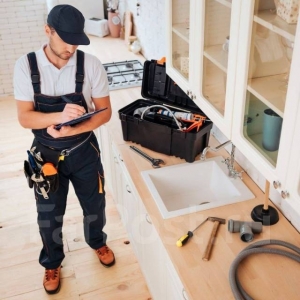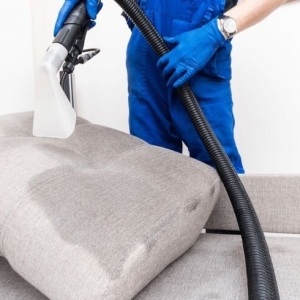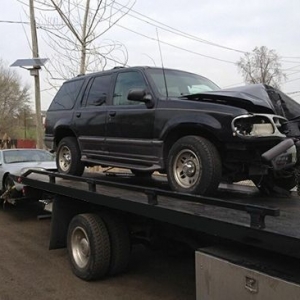Your home's heating and cooling system is one of those things you rarely think about until it stops working. That sudden silence on a freezing winter night or the lack of cool air on a humid summer afternoon is a homeowner's nightmare. In that moment of panic, the big question arises: Is this a simple fix, or am I facing a major investment? Understanding the critical difference between scheduling an HVAC inspection and tune up and committing to a full HVAC unit replacement can save you thousands of dollars and immense frustration.
This decision isn't always black and white. It hinges on the age of your system, its performance history, and your long-term goals for your home. Making the right choice protects your budget, ensures your family's comfort, and provides invaluable peace of mind. Let's break down these two very different paths so you can approach your HVAC system with confidence, not anxiety.
The Preventative Power of an HVAC Inspection and Tune-Up
Think of an HVAC inspection and tune-up as an annual physical for your home's climate control system. It's a proactive, scheduled service designed to keep a healthy system running at its best and to catch small problems before they become big, expensive ones.
What Exactly Happens During a Tune-Up?
A comprehensive tune-up is a thorough process, not just a quick look. A qualified technician will typically:
- Inspect Key Components: They'll check the heat exchanger for cracks, examine the blower motor, assess electrical connections, and look for signs of wear and tear on belts and bearings.
- Clean for Efficiency: The system's coils (both evaporator and condenser), blower components, and drain lines will be cleaned. A clogged condenser coil outside, for instance, can force your system to work up to 30% harder, directly impacting your energy bills.
- Measure and Adjust: The technician will check refrigerant levels, test for safe operation of the gas furnace, measure airflow, and calibrate the thermostat to ensure it's reading temperatures accurately.
- Identify Minor Issues: This is where the real value lies. They might find a capacitor that's starting to weaken or a drain line that's beginning to clog. Addressing these $150 problems during a tune-up prevents a $1,500 emergency breakdown later.
When is a Tune-Up the Right Choice?
An inspection and tune-up is your go-to strategy in these situations:
- Preventative Maintenance: Your system is under 10 years old and has been running relatively well. An annual tune-up is the best way to extend its lifespan and maintain its efficiency.
- Minor Performance Issues: You've noticed a slight increase in your energy bills or your home isn't cooling or heating as evenly as it used to. A tune-up can often restore peak performance.
- Pre-Season Preparation: The best time to schedule a tune-up is in the spring for your AC and in the fall for your furnace. This ensures the system is ready to handle the demands of the upcoming season.
A tune-up is an investment in the health and longevity of your existing system. It’s a relatively low-cost service that delivers high value in performance, efficiency, and preventative care.
Recognizing the Need for a Full HVAC Unit Replacement
While a tune-up maintains a system, a replacement is about investing in a new one. This is a major decision, typically driven by one or more clear indicators that your current unit is beyond its useful life or is no longer cost-effective to maintain.
The Telltale Signs of a Failing System
Be on the lookout for these red flags:
- The Age Factor: The average lifespan of a well-maintained HVAC unit is 15-20 years. If your system is within this range or older, it's living on borrowed time. Efficiency standards have improved dramatically; a 15-year-old unit is likely significantly less efficient than a new model.
- Frequent and Costly Repairs: If you're calling for service multiple times a year, or you're facing a repair bill that is more than half the cost of a new system, you're likely throwing good money after bad. This is the "band-aid" effect, where you're continuously fixing symptoms instead of solving the root problem.
- Consistently High Energy Bills: As systems age, they lose efficiency. If you see a steady, unexplained climb in your monthly energy costs, your HVAC unit is likely the culprit. It's working much harder to do the same job.
- Inconsistent Comfort and Strange Noises: Are some rooms too hot while others are too cold? Do you hear banging, screeching, or rattling? These are signs of a system that can no longer distribute air effectively or has significant internal mechanical issues.
The "5,000 Rule" - A Practical Financial Guide
This is a helpful rule of thumb used by many HVAC professionals. Multiply the age of your equipment by the estimated repair cost. If the result is more than $5,000, replacement is likely the smarter financial decision.
- Example of a Repair: An 8-year-old unit needs a $400 repair. (8 x $400 = $3,200). This is less than $5,000, so the repair is justified.
- Example of a Replacement: A 17-year-old unit needs a $2,000 compressor. (17 x $2,000 = $34,000). This far exceeds $5,000, making replacement the clear choice.
Weighing the Long-Term Benefits: Tune-Up vs. Replacement
The right choice depends on whether you're optimizing for short-term maintenance or long-term value.
The Benefits of Sticking with a Tune-Up:
- Lower Upfront Cost: A tune-up is a fraction of the cost of a full system replacement.
- Extended System Lifespan: Regular maintenance can add years to your unit's life.
- Sustained Efficiency: It helps your system run as efficiently as it was designed to, preventing a spike in energy bills.
- Prevention of Emergencies: It’s your best defense against a catastrophic breakdown on the hottest or coldest day of the year.
The Compelling Case for Replacement:
- Dramatically Lower Operating Costs: New systems are vastly more efficient. Upgrading from a SEER 13 to a SEER 16 AC unit can reduce your cooling costs by over 20%. The monthly savings on your energy bill can be substantial.
- Enhanced Home Comfort: Modern systems, especially those with variable-speed motors, provide superior temperature and humidity control, eliminating hot and cold spots.
- Improved Indoor Air Quality: A new system offers a clean start and can be paired with advanced air filtration to reduce dust, allergens, and pollen.
- Reliability and Peace of Mind: A new unit comes with a manufacturer's warranty, eliminating the stress and cost of frequent repairs for years to come.
- Increased Home Value: A new, high-efficiency HVAC system is an attractive feature for potential buyers.
Making the Right Choice for Your Home and Budget
So, how do you decide? Start with a professional HVAC inspection and tune up. This is not a sales call; it's a diagnostic service. A reputable and honest technician will provide a clear assessment of your system's health.
During the inspection, ask these key questions:
- "What is the overall health and remaining lifespan of my current system?"
- "Are the repairs needed now minor and preventative, or are they signs of a major failure to come?"
- "Based on my energy bills, how much could I save each month with a new, high-efficiency system?"
- "Can you provide a detailed quote for both the immediate repair and a full system replacement for comparison?"
The technician's answers will give you the data you need. If the system is young and the issues are minor, the tune-up path is your most cost-effective choice. If the system is old, inefficient, and requiring expensive repairs, the technician will likely recommend replacement, and the inspection will have provided the justification for that significant investment.
Ultimately, an hvac inspection and tune up is about preservation, while an hvac unit replacement is about progression. One protects the system you have; the other upgrades you to a new level of comfort, efficiency, and reliability. By understanding this fundamental difference, you can move from a place of uncertainty to a position of control, making the decision that best secures the comfort and value of your home.











